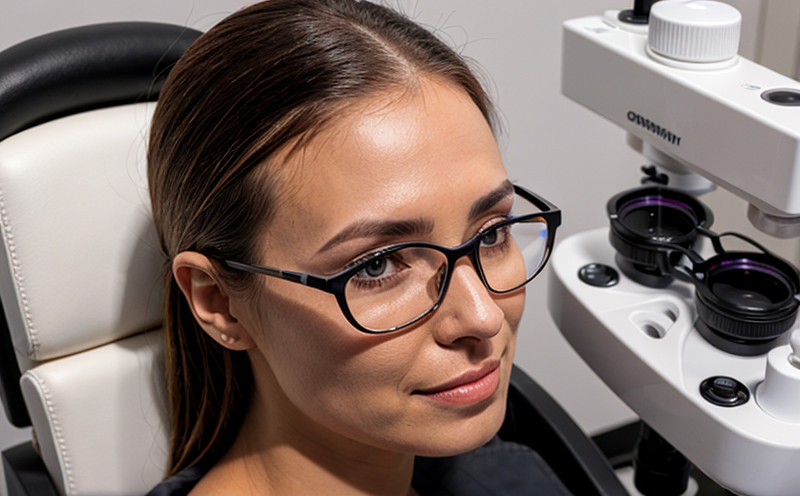USP Leachables Testing of Dropper Bottles
USP Leachables Testing of Dropper Bottles is a critical process in ensuring pharmaceutical products meet stringent quality and safety standards. This testing ensures that the materials used in packaging, such as dropper bottles, do not leach harmful substances into the product during storage or usage. The United States Pharmacopeia (USP) sets forth guidelines for this type of analysis to protect patient health.
The process involves several steps which include selecting appropriate leachable compounds based on material composition, extracting these compounds from the dropper bottle using a suitable solvent, and analyzing them through various analytical techniques such as High-Performance Liquid Chromatography (HPLC), Inductively Coupled Plasma Mass Spectrometry (ICP-MS), or Gas Chromatography-Mass Spectrometry (GC-MS).
The importance of this testing cannot be overstated, especially considering the potential risks associated with leachables. These compounds can include metals like copper and nickel, plasticizers such as phthalates, and other potentially harmful substances. If not adequately controlled, these materials could migrate into the product, leading to quality issues or even health hazards.
The testing method described in USP General Chapter <1658>, which covers leachables and extracts from pharmaceutical packaging systems, provides a framework for conducting this analysis. The method emphasizes the need for thorough preparation of samples, selection of appropriate solvents, and robust analytical techniques to ensure accurate results.
For effective USP leachables testing of dropper bottles, it is essential to follow strict protocols outlined in the USP guidelines. This includes using high-quality materials for sample preparation, employing calibrated instruments, and adhering to standardized procedures throughout the process. Properly conducted tests help manufacturers demonstrate compliance with regulatory requirements and safeguard the integrity of their products.
| Sample Preparation | Analytical Techniques | Risk Management |
|---|---|---|
| Select appropriate leachable compounds based on material composition. Clean dropper bottles thoroughly before use. Ensure solvents used are of the highest purity. |
HPLC, ICP-MS, GC-MS Validation of analytical methods for accuracy and precision. |
Evaluation of potential risks associated with leachables in pharmaceutical products. |
The above table outlines key steps involved in sample preparation, the use of appropriate analytical techniques, and considerations for risk management. Proper adherence to these guidelines ensures reliable test results that are critical for product safety.
In summary, USP leachables testing is crucial for ensuring dropper bottle integrity and preventing contamination of pharmaceutical products. By following the rigorous standards set forth by the USP, manufacturers can produce safe and effective medications that meet regulatory requirements and protect public health.
Scope and Methodology
The scope of USP leachables testing for dropper bottles encompasses a comprehensive evaluation of all materials used in their construction to ensure they do not introduce harmful substances into the product. This includes plastics, rubber stoppers, glass containers, and any other components that come into contact with the medication.
The methodology involves several key steps:
- Material identification: Determine the exact composition of all parts of the dropper bottle to identify potential leachable compounds.
- Solvent selection: Choose appropriate solvents based on the materials used and the nature of the product being stored. Common solvents include methanol, acetonitrile, or water.
- Extraction process: Extract leachables from the dropper bottle using the selected solvent under controlled conditions to simulate real-world scenarios as closely as possible.
- Analytical techniques: Utilize advanced analytical methods such as HPLC, ICP-MS, or GC-MS to quantify and identify the extracted substances. These tests are designed to detect even minute traces of leachables.
- Data interpretation: Interpret the results in conjunction with USP guidelines to assess whether the levels of leachables are acceptable for safe use.
By following this structured approach, laboratories can provide reliable and accurate test results that meet regulatory standards. It is important to note that the choice of solvent and extraction conditions should be based on the specific characteristics of each dropper bottle material to ensure thorough testing.
Why Choose This Test
The USP leachables testing for dropper bottles is vital due to several reasons:
- Regulatory Compliance: Ensures adherence to international standards set by the USP, which are widely recognized and accepted in the pharmaceutical industry.
- Patient Safety: Helps prevent the introduction of potentially harmful substances into medicinal products, thus safeguarding public health.
- Product Integrity: Maintains the quality and efficacy of the medication by ensuring that packaging materials do not contaminate the product during storage or use.
- Risk Management: Provides valuable insights into potential risks associated with leachables, allowing manufacturers to implement appropriate mitigation strategies.
- Confidence in Quality: Offers assurance to patients and healthcare professionals that the medication is safe and meets high-quality standards.
- Competitive Advantage: Demonstrates a commitment to excellence in manufacturing processes, which can enhance brand reputation and customer trust.
In conclusion, USP leachables testing for dropper bottles plays a crucial role in ensuring the safety and quality of pharmaceutical products. By choosing this test, manufacturers can demonstrate compliance with regulatory requirements and provide assurance that their products are safe for use.
International Acceptance and Recognition
The USP leachables testing for dropper bottles enjoys widespread international acceptance and recognition due to its rigorous standards and consistent results. This test is not only recognized in the United States but also in many other countries around the world, including:
- European Union (EU)
- United Kingdom
- Canada
- Australia
- New Zealand
- Japan
- Singapore
- India
The USP guidelines for leachables testing are harmonized with international standards such as ISO, ASTM, and EN, ensuring that the results obtained from this test are universally accepted. Laboratories that perform these tests are typically accredited to ISO/IEC 17025, further enhancing their credibility and reliability.
The high level of acceptance for USP leachables testing can be attributed to its ability to consistently deliver accurate and reliable results. This consistency is achieved through the use of standardized procedures, calibrated instruments, and well-trained personnel. As a result, manufacturers from around the world rely on this test to ensure the quality and safety of their pharmaceutical products.





